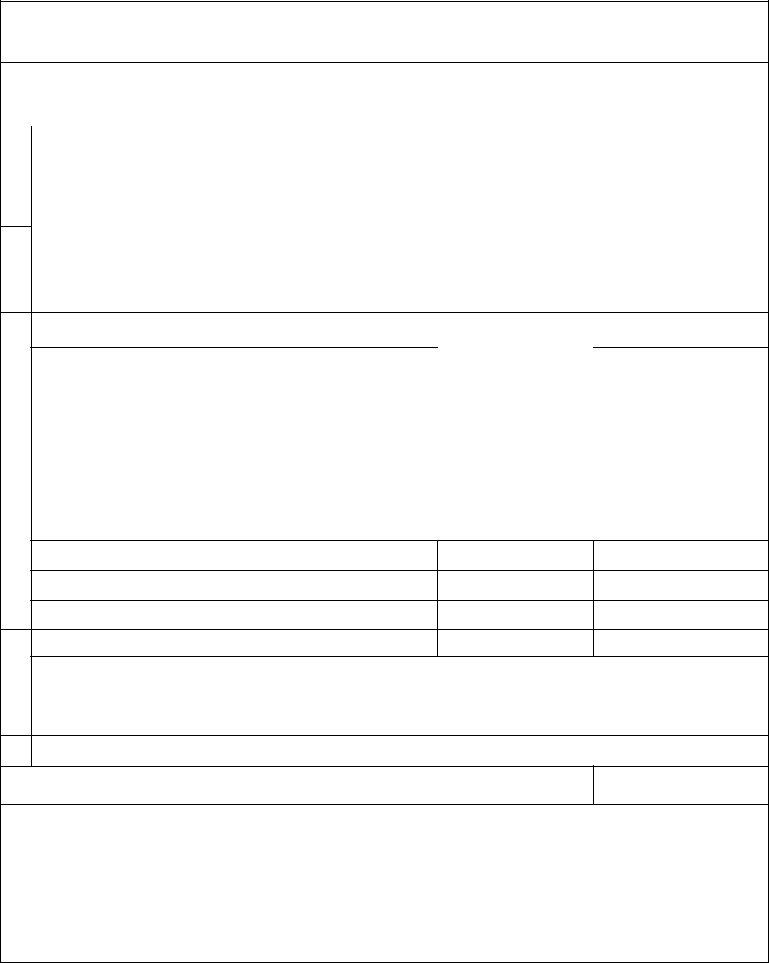The Department of Homeland Security’s U.S. Coast Guard CG-6049 form, known as the Personal Fitness Plan, plays a crucial role in maintaining the health and fitness of Coast Guard military personnel. This form, required biannually in April and October, encompasses comprehensive sections that military members must fill out, while civilian personnel engaged in exercise during work time are also encouraged to complete and submit this document to their supervisors. It is designed to assess individual fitness levels and to aid in the creation of a personalized fitness plan aligned with the Coast Guard Weight and Body Fat Standards and Health and Fitness Programs. The form guides members through setting fitness and health improvement goals, outlining a balanced exercise program that includes aerobic activity, strength training, and flexibility. These elements are aimed at addressing cardiorespiratory endurance, muscular strength and endurance, body composition, and flexibility — key components of physical fitness. Furthermore, the form serves as a part of the health and fitness assessment process, emphasizing the importance of a well-rounded approach to physical wellness. Information provided on the form is utilized by Coast Guard personnel for evaluating fitness plans, with stipulations for referral to health promotion coordinators or medical officers for those requiring additional guidance. Essential for the well-being of the Coast Guard’s members, the CG-6049 form embodies the organization’s commitment to promoting healthy lifestyles and optimal fitness among its ranks.
| Question | Answer |
|---|---|
| Form Name | Cg 6049 Form |
| Form Length | 2 pages |
| Fillable? | No |
| Fillable fields | 0 |
| Avg. time to fill out | 30 sec |
| Other names | cg fitness plan, uscg personal fitness plan, CDC, UHPC |

DEPARTMENT OF HOMELAND SECURITY
U.S. Coast Guard
PERSONAL FITNESS PLAN
All Coast Guard military personnel shall complete sections 1 - 5, (read instructions on back before starting) and submit to their Supervisor in the months of April and October. Civilian personnel participating in exercise during work time must also complete and submit this form to their Supervisor. This form shall be kept on file or electronically saved by the individual and with the Unit Health Promotion Coordinator.
1. |
Last Name, First Name, Middle Initial |
Date |
Unit |
|
|
|
|
2. |
My Health Promotion Manager is: |
My Unit Health Promotion Coordinator is: |
|
|
|
|
|
3.My Fitness & Health Improvement goal is:
4.I plan to meet Commandant requirements of 180 minutes a week of moderate to vigorous physical activity by doing the following:
4a. My AEROBIC ACTIVITY PLAN (recommended at least 150 min/wk):
|
Activities |
Time (min.) |
Intensity |
|
|
|
|
|
|
|
|
|
|
|
|
|
|
|
|
|
|
|
|
|
|
|
|
4b. My STRENGTH TRAINING PLAN (recommended at least 2 times per week):
Activities
Time (min.)
Frequency (# of days/wk)
5.
____________________________ |
___________________________ |
||
Member Signature |
Date |
Supervisor Signature |
Date |
6.
If Member was referred for physical fitness guidance, indicate below (e.g. HPM, UHPC, Medical Officer).
Date
PRIVACY ACT STATEMENT
Authority: 5. U.S.C. 301, 3301; 44 U.S.C. 3101; 10 U.S.C.
Purpose: To assess an individual's fitness level as part of the Coast Guard Weight and Body Fat Standards and Health and Fitness Programs.
Routine Uses: Information will be used by Coast Guard personnel to evaluate an individual's fitness and develop a personal fitness plan. Any external disclosures of data within this record will be made in accordance with
Disclosure: Furnishing this information is voluntary; however, failure to furnish the information may impede the health and fitness assessment process.
Page 1 of 2 |

INSTRUCTIONS FOR COMPLETING PERSONAL FITNESS PLAN FORM
Sections
1&2 Are
3.Program goals. Members should use this section to enter their goals related to fitness and health, such as fitness achievement, weight/body fat loss, nutrition improvement, stress reduction, weight management, or health risk reduction.
4.A
(cardiorespiratory endurance, muscular strength and endurance, flexibility, and body composition). Aerobic activities develop cardiorespiratory endurance and burn calories to aid in achieving a healthy body composition. Muscle- strengthening activities develop muscular strength and endurance and assist with the development of a healthy body composition. Activities such as stretching and yoga help improve flexibility. Members should select activities that address the
5.
6.Supervisor shall indicate if member was referred to the Unit Health Promotion Coordinator (UHPC), Regional Health Promotion Manager (HPM) or Medical Officer for additional guidance and evaluation for appropriate physical fitness activities.
Physical Activity Guidelines for Adults (CDC, 2008)
Aerobic Activities:
ク2 hours and 30 minutes (150 minutes)/week of moderate intensity aerobic activity OR 1 hour and 15 minutes (75 minutes)/week of
クAerobic activity should be performed for at least 10 minutes at a time and spread throughout the week.
クFor greater health benefits, 5 hours (300 minutes)/week at a moderate intensity level OR 2 hours and 30 minutes (150 minutes)/week at a vigorous intensity level OR an equivalent mix of both is recommended.
クLevel of Intensity Defined: Intensity can be estimated using a scale of 0 to 10, where 0 is sitting and the highest possible level of effort is 10.
クModerate intensity ᄆ# a person doing
クVigorous intensity ᄆ#a person doing
クMuscle Strengthening: should be done 2 or more days per week.
Flexibility:
クEach time you perform aerobic or
Appropriate Physical Activity Intervention Strategies for Weight Loss and Prevention of Weight Regain for Adults (ACSM, 2009)
クThe American College of Sports Medicine (ACSM) states that
Page 2 of 2 |